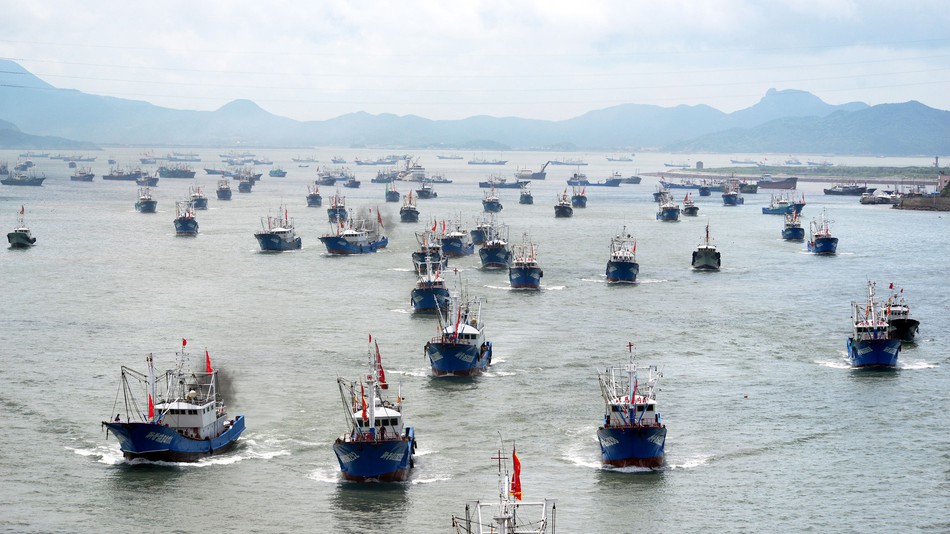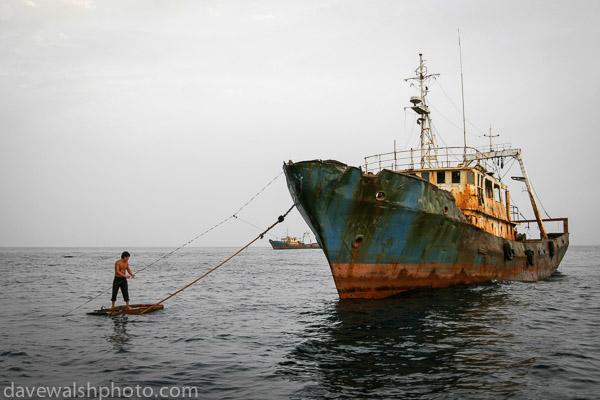
Forecast Highlights
- China will keep expanding the defense role of its fishing fleet, integrating it with the Chinese military.
- Beijing’s intentions will be filtered through local actors with strong interests of their own and different interpretations of how to carry out their missions, making their actions unpredictable.
- China’s rivals in the South China Sea will also rely heavily on civilian fleets to further their national goals, raising the risk of short, sharp crises unfolding as the disputed waters become more congested.
Over the past four decades, China has gradually abandoned its self-imposed isolation in favor of deep ties with global markets.
Though the approach has pushed the Chinese economy to new heights, it has also made the country’s supply lines more vulnerable, a reality to which the Chinese military has had to adapt.
The seas — not the land — are now the key to China’s economic security and regional dominance, and protecting them has become one of Beijing’s greatest concerns.
But safeguarding the South China Sea, the most valuable of China’s waterways, is no easy task, and Beijing has employed a variety of creative tactics to try to do so.
In addition to building up islands and troop numbers alike, China has encouraged its fishermen to venture out into the disputed waters.
The civilian fleet, which has spread across the territory staked by the “nine-dash line”, defends China’s claims as any navy might by harrying and diverting the ships of its competitors.
Using untrained and unarmed fishermen to carry out foreign policy has its drawbacks, though. Hundreds of thousands of tiny fishing boats are difficult to track, direct and control, and Beijing has little assurance they can be trusted to act on China’s behalf without starting a messy international incident.
To fix matters, the Chinese government has made an effort in recent years to build up a small subset of its fishing fleet: the maritime militia.
Though these fishermen still complete their normal activities, they do so equipped with light arms, better vessels and monitoring equipment, ready to respond to the needs of China’s leaders.
Their movements ebb and flow with those of the fisheries, but they spend more time at sea — and in more obscure locations — than the comparatively conspicuous coast guard or naval vessels, giving Beijing a more granular picture of (and some measure of ambient control over) its sprawling maritime domain.
As China continues to expand its reach in the contested waters of the Asia-Pacific, the importance of the maritime militia in defending those claims will only grow.

Mobilizing the People
Militias are not a unique instrument in the history of warfare. Many nations worldwide and throughout time have mobilized their populations for defense purposes without removing them from the workforce, for good reason.
In times of war, these irregular soldiers serve as force multipliers, enhancing the effectiveness of professional troops by providing logistical support or harassing the enemy. In times of peace, they can relay vital intelligence to the military and support leaders’ strategic goals.
China maintained militias since before the Communist Party rose to power in 1949. Modern Chinese militias, however, are largely a holdover from Mao Zedong’s “people’s war” strategy, which called for arming citizens so they could bleed an invader dry.
The ranks of these militias are drawn from all levels of society and are formed at the local level, set up by government institutions and employees of state-owned, private and even foreign enterprises.
About 2 to 3 percent of the country’s defense budget is allocated toward training and equipping them, supplemented by additional funding from local governments.
Of China’s many militias, the maritime militia plays an especially active role.
Though there are no reliable estimates of its numbers, units exist in all of China’s coastal provinces, scattered among cities, villages and islands. Like their land-based counterparts, they have been around for some time but their role has grown alongside China’s maritime ambitions.

The original purpose of the militias, which were established in the 1950s, was to augment the Communist government’s meager naval defenses by patrolling the coastline to prevent Kuomintang incursions from Taiwan.
When China began its initial effort to solidify its South China Sea claims in the early 1970s, maritime militias participated, helping the military to seize the western Paracel Islands from South Vietnam in 1974.
Since 2009, the militias have resumed their place on the front lines of numerous clashes around the Paracels and Scarborough Shoal, rebuffing Vietnamese, Philippine and U.S. advances.
A Flexible Policy Tool
There are several ways maritime militia units can carry out the government’s policies. Officially, the maritime militia has three goals: to encourage fishermen to exploit all of China’s claimed waters, to further the “national will” to establish maritime control, and to protect fellow fishermen in those pursuits.
Maritime militiamen are China’s first line of defense in disputed waters, followed by maritime law enforcement and the Chinese navy.
Exactly how the militia executes its goals varies by region. Maritime units in Fujian, Zhejiang, Jiangsu and Shandong provinces are oriented toward building up China’s offensive capabilities against Taiwan.
In addition to conducting surveillance, maritime militias in these areas are expected to act as an auxiliary force that assists in operations against Taiwan, including landings. Maritime militias in Guangdong, Guangxi and Hainan, by comparison, operate in the South China Sea.
Their activities also depend on China’s current threat level. In peacetime, maritime militias serve as the military’s eyes and ears, transmitting intelligence on conditions in far-flung waters to the mainland via radio and satellite communications.
The information is also used by maritime law enforcement agencies to better regulate fishing. At the same time, militia vessels participate in reef and island building near disputed islands where the Chinese military is present.
Cabbage strategy
This tactic is part of Beijing’s “cabbage strategy” of enlisting all of China’s military, law enforcement and civilian ships to envelop the islands in overlapping layers of vessels and surveillance.
When tensions with China’s neighbors run high, maritime militias may escalate their operations and even clash with other nations’ ships.
They did just that in 2011, when they harassed PetroVietnam vessels near the Vietnamese coast; in 2012, when they became embroiled in a standoff with the Philippines over Scarborough Shoal; and in 2014, when they protected China’s Haiyang Shiyou 981 oil rig from Vietnamese reprisals.
Chinese militias also impeded U.S. vessels that were conducting freedom of navigation patrols in waters claimed by China in 2015. If open war were to break out, these activities would intensify, distracting enemy ships while fishing boats ferry supplies to other Chinese forces.
Intelligence, surveillance and reconnaissance as well as laying mines, providing transport, spying and harassing enemies are critical wartime functions of the maritime militia.
A Risky Strategy
Not all Chinese fishermen belong to the maritime militia, but that does not mean they are not useful to Beijing.
The Chinese government can still prod them to support its goals through regulations, specialized subsidies and incentives. By definition, though, these civilian vessels are almost entirely out of the government’s control.
The maritime militia, by comparison, is integrated into military and civilian command structures and receives political education, training and weaponry from the government.
At the national level, the People’s Liberation Army General Staff Department sets the regulations for all militias.
Locally, though, Party committees and military units share leadership of the maritime militia, handling its day-to-day activities. So although there is a chain of command directly linking the maritime militia to the highest Communist Party bodies, many of its orders are filtered through local leaders’ lenses.
Once at sea, China’s armed fishermen may even act on their own interpretations of Beijing’s interests. After all, they are fishermen first and foremost, not rigidly disciplined regular forces. From Beijing’s perspective this presents a risk, since militia members may make rash decisions or act imprudently.
In an attempt to assert some degree of control over these units, the Chinese government has mandated they receive annual training that emphasizes Party ideology and national policy. But enforcing this requirement is another matter.
Because maritime militias’ primary role still lies in the fishing industry, there is no guarantee that all members will be able to attend trainings.
Instead, Beijing must rely on boat captains and information officers to collect and relay information to and from government officials.
China’s increasing reliance on its maritime militias has also carried an unintended consequence: Its neighbors have begun to build them, too.
Vietnam, for example, established its own maritime militia in 2009 hoping to replicate Beijing’s success. Now it and other South China Sea states are leaning more heavily on unconventional forces to assert their claims.
Though China’s maritime militia is undoubtedly the most official, organized and well-funded in the region, the proliferation of vessels — whether civilian, paramilitary or military — does not bode well for Beijing or its rivals.
And as the contested sea becomes more crowded with actors that are loosely controlled at best, the chances of unexpected conflict will rise.
Source: Stratfor


